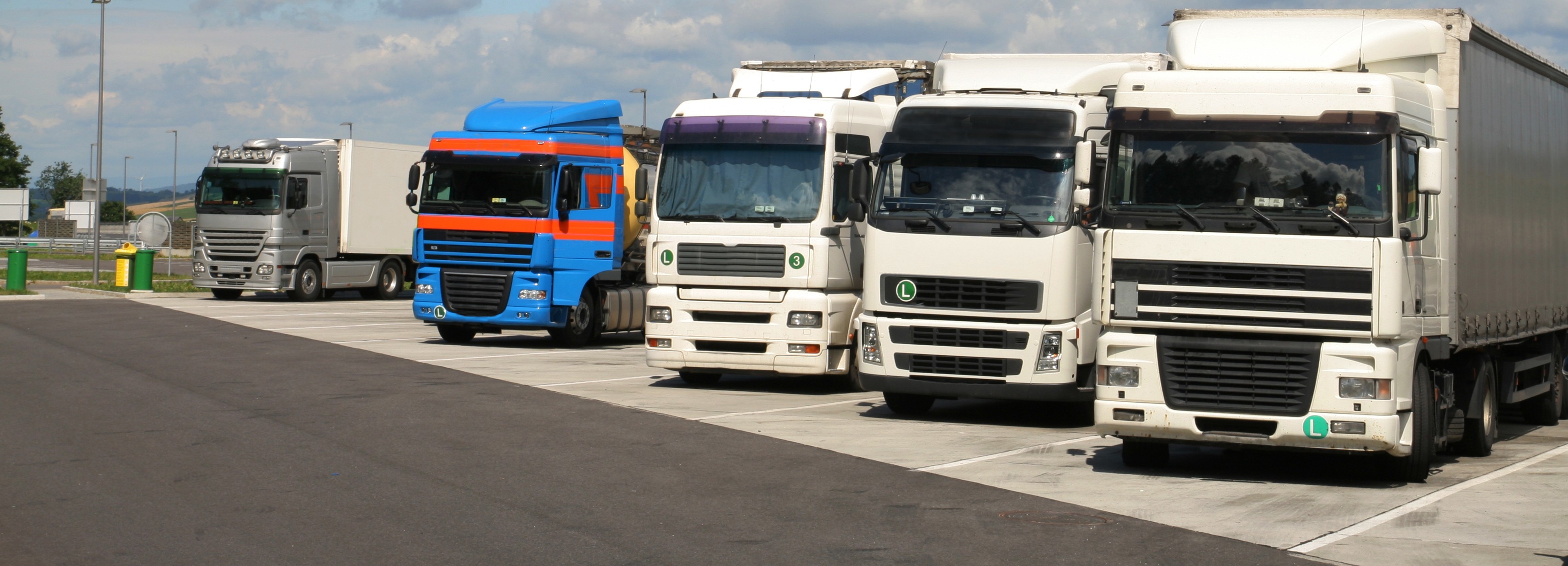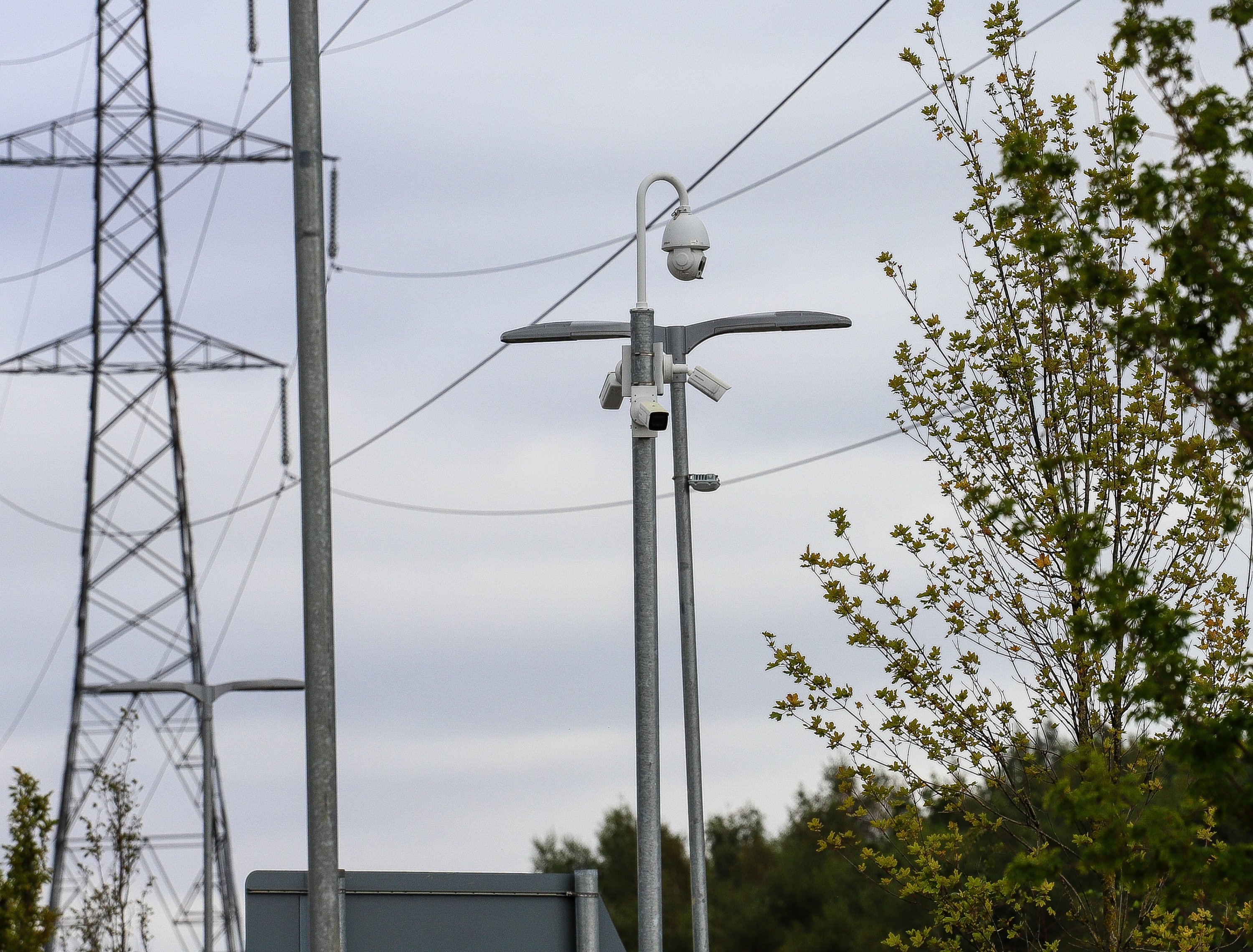
Miranda Blake
Čo sa považuje za "bezpečné parkovanie nákladných vozidiel"? Vodiči sa vyjadrujú
Vytvorené: 09. 12. 2024
•
Aktualizované: 09. 12. 2024
Jednou z najväčších výziev pre vodičov je nájsť bezpečné parkovacie miesta. Prieskum, ktorý uskutočnili priemyselné dozorné orgány, odhalil, že mnohí z nich majú pocit, že bezpečnosť na parkoviskách pre nákladné vozidlá nie je na uspokojivej úrovni.
Poďme sa pozrieť na rôzne aspekty, ktoré prispievajú k bezpečnému parkovaniu nákladných vozidiel z pohľadu vodičov, a preskúmajme základné opatrenia a vybavenie. Okrem toho sa pozrieme na celkové prostredie, ktoré podporuje pocit ochrany.
Úloha parkovania nákladných vozidiel v logistike
Vodiči nákladných vozidiel musia parkovať v súlade s prísnymi predpismi týkajúcimi sa doby odpočinku. Okrem toho potrebujú miesta, kde si môžu oddýchnuť, doplniť palivo a občerstviť sa bez strachu z vlámania alebo vandalizmu. Keďže približne 81 % nákladu sa prepravuje cestnou dopravou, dopyt po bezpečnom parkovaní nákladných vozidiel je pre úspech tohto odvetvia skutočne rozhodujúci.
Neprimerané opatrenia môžu mať vážne následky vrátane krádeže nákladu, poškodenia vozidla a ohrozenia osobnej bezpečnosti. To spôsobilo, že vodiči často vyjadrujú frustráciu - môže ich to odradiť od prestávok a v konečnom dôsledku ovplyvniť ich výkonnosť na cestách.
Základné opatrenia
Základným aspektom bezpečného parkovania nákladných vozidiel je zavedenie fyzických zábran. Robustné oplotenie obvodu je nevyhnutné na zabránenie neoprávnenému prístupu. Nevyhnutnosťou sú kontrolované vstupné a výstupné body, ako napríklad brány, ktoré vyžadujú prístup na kartu alebo kód. Takéto opatrenia výrazne znižujú pravdepodobnosť narušenia a zvyšujú celkovú bezpečnosť.
Nevyhnutné je aj účinné osvetlenie. Dobre osvetlené priestory odrádzajú od trestnej činnosti a poskytujú vodičom pocit ochrany a istoty pri navigácii na zastávkach nákladných vozidiel, najmä počas noci.
Ďalším dôležitým aspektom je komplexný video dohľad. Kamery CCTV by mali pokrývať celé parkovisko a umožňovať neustále monitorovanie a zaznamenávanie činností. Mnohí prevádzkovatelia nákladných vozidiel oceňujú vedomie, že ich vozidlá a náklad sú pod nepretržitým dohľadom, pretože to môže byť účinný odstrašujúci prostriedok pre potenciálnych zločincov.
Prítomnosť vyškoleného bezpečnostného personálu zvyšuje úroveň ochrany. Ochranka môže pohotovo reagovať na incidenty, pomáhať a udržiavať viditeľnú prítomnosť, ktorá zvyšuje celkový pocit bezpečnosti. Vodiči nákladných vozidiel sú často pokojnejší, keď vedia, že na mieste sú profesionáli, ktorí zvládnu všetky problémy, ktoré môžu nastať.
Kľúčom k úspechu sú ľahko dostupné núdzové komunikačné systémy - mali by byť k dispozícii núdzové hlásiče alebo interkomové systémy, ktoré vodičom umožnia v prípade potreby rýchlo kontaktovať bezpečnostnú službu alebo krízové služby. V odľahlých oblastiach, kde okamžitá pomoc nemusí byť ľahko dostupná, je táto funkcia obzvlášť dôležitá.

Ďalšie funkcie
Čisté a dobre udržiavané toalety a sprchy sú tiež veľmi cenené, najmä na dlhých cestách. Opatrenia by sa mali rozšíriť aj na tieto zariadenia a zabezpečiť, aby boli uzamknuté a pod dohľadom - to nielen zvýši komfort vodičov, ale prispeje aj k ich celkovému pocitu bezpečnosti.
Aj keď to priamo nesúvisí s bezpečným parkovaním nákladných vozidiel, dodatočné vybavenie môže výrazne zvýšiť celkový komfort parkoviska. Možnosti stravovania, prístup k Wi-Fi a elektrické prípojky pre chladiarenské prívesy vytvárajú príjemnejší priestor. Prínosom môžu byť aj základné služby údržby, ktoré umožnia vodičom kamiónov riešiť drobné problémy bez toho, aby museli opustiť areál.
Vytváranie lepšieho prostredia
Zabezpečené parkovisko pre nákladné vozidlá by sa malo účinne starať aj o vodičov. Mnohí sa podelili o to, že sa na niektorých miestach cítia podhodnotení, čo môže mať negatívny vplyv na ich skúsenosti. Tie, ktoré sa k vodičom kamiónov správajú s rešpektom a poskytujú priateľskú atmosféru, podporujú opakované návštevy a posilňujú lojalitu.
Na zlepšenie tohto stavu je nevyhnutné investovať do odbornej prípravy zamestnancov. Zamestnanci by mali rozumieť jedinečným potrebám vodičov nákladných vozidiel a vedieť, ako poskytovať vynikajúce služby zákazníkom.
Riešenie problémov vodičov
Je dôležité vedieť, že ženy - vodičky, ktoré tvoria malé percento pracovnej sily v nákladnej doprave, často čelia ďalším výzvam v oblasti bezpečnosti. Mnohé ženy uvádzajú, že sa v prevažne mužskom prostredí necítia bezpečne, najmä ak na zastávkach nákladných vozidiel chýbajú primerané bezpečnostné opatrenia - je nevyhnutné zohľadniť ich špecifické potreby a prijať opatrenia na zabezpečenie ich bezpečnosti a spokojnosti.
Ďalším faktorom je, že niektorí vodiči nákladných vozidiel majú špecifické stravovacie potreby. Ponuka zdravých potravín a uspokojenie rôznych stravovacích požiadaviek môže zlepšiť ich zážitok a prispieť k pozitívnej pohode vodičov.
Budúcnosť bezpečného parkovania nákladných vozidiel
Inovácie, ako sú inteligentné monitorovacie systémy, automatické kontroly vstupu a monitorovanie v reálnom čase, môžu výrazne zlepšiť opatrenia. Zastávky nákladných vozidiel, ktoré investujú do takýchto riešení, majú väčšiu šancu prilákať viac vozových parkov a vodičov, ktorí hľadajú bezpečné možnosti.
Riešenie problémov v tejto oblasti si vyžaduje spoluprácu medzi rôznymi zainteresovanými stranami vrátane vládnych agentúr, logistických spoločností a prevádzkovateľov parkovacích zariadení. Spoluprácou môžu tieto skupiny vyvinúť komplexné stratégie na zlepšenie bezpečnosti a celkového zážitku pre vodičov nákladných vozidiel.
Presadzovanie zmien v politike, ktoré uprednostňujú potreby vodičov, má zásadný význam pre vytvorenie bezpečnejšieho prostredia. Odvetvové organizácie a advokátske skupiny môžu zohrávať významnú úlohu pri zvyšovaní povedomia o dôležitosti bezpečného parkovania nákladných vozidiel a presadzovaní legislatívnych zmien, ktoré podporujú zlepšenia infraštruktúry.
Nájsť bezpečné služby
V spoločnosti SNAP kladieme dôraz na bezpečnosť vodičov a pomáhame parkoviskám kamiónov prostredníctvom našej špecializovanej divízie Access & Security. Od ANPR kamier a softvéru cez platobné terminály, zábrany, vstupné systémy až po kamerové systémy CCTV, zavedieme všetko, aby sme čo najlepšie ochránili vodičov nákladných vozidiel, vozidlá a náklad pre parkoviská nákladných vozidiel, MSA, vozové depá a ďalšie.
Viac informácií o službe SNAP Access & Security tu alebo o našich ďalších službách (ako je parkovanie a umývanie) sa dozviete na webovej stránke SNAP.



